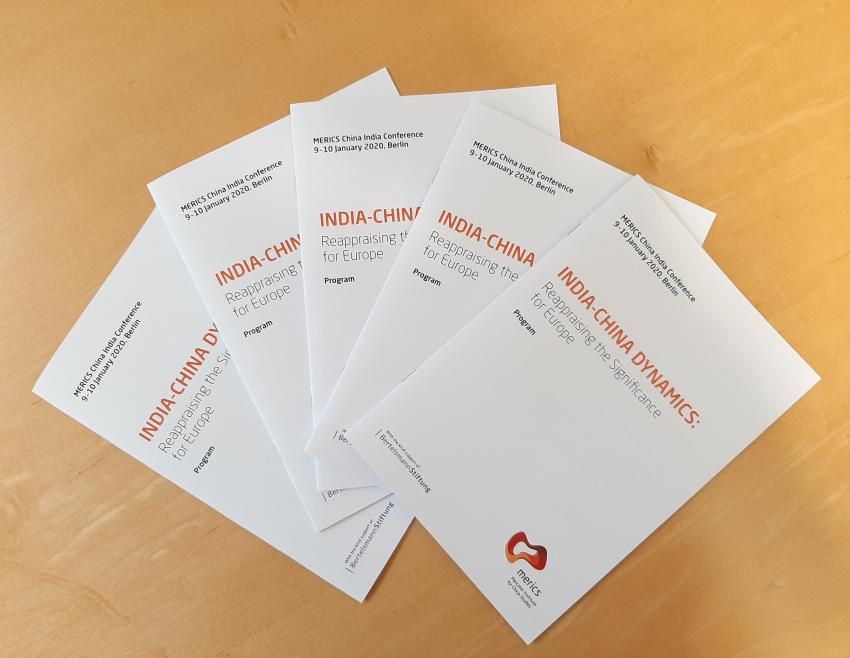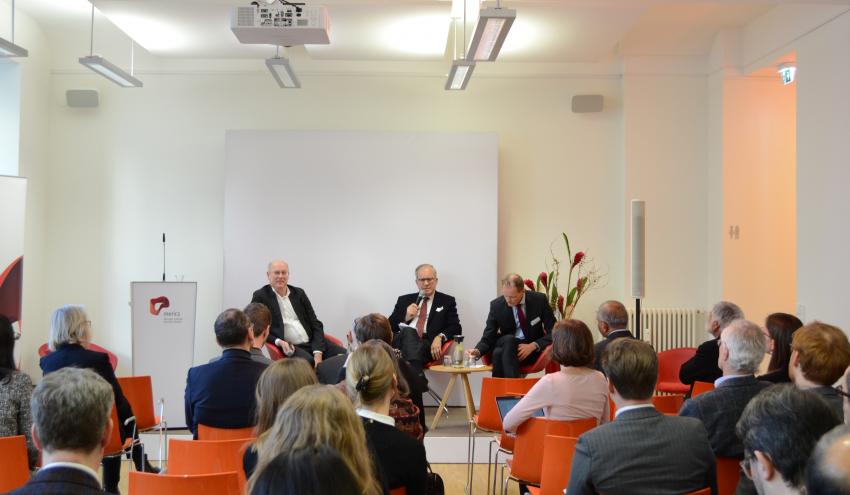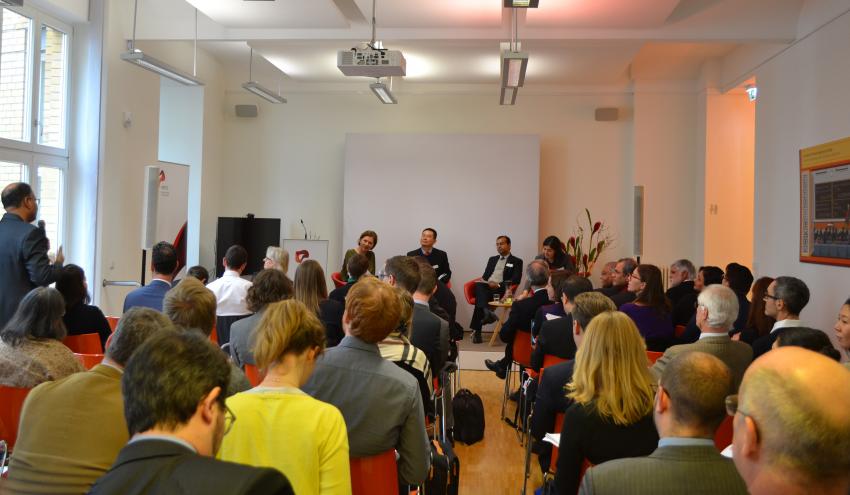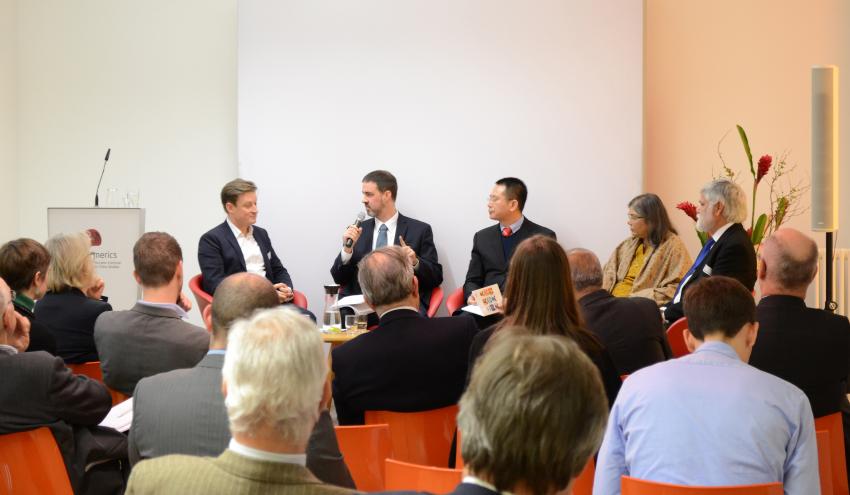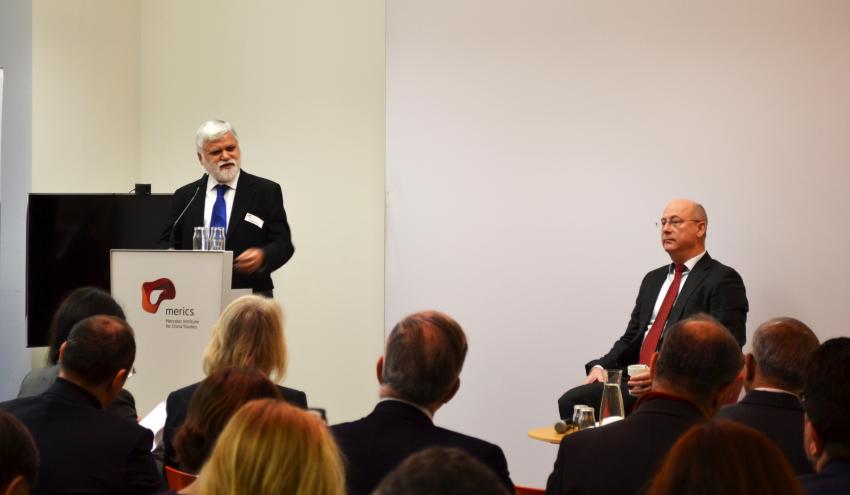
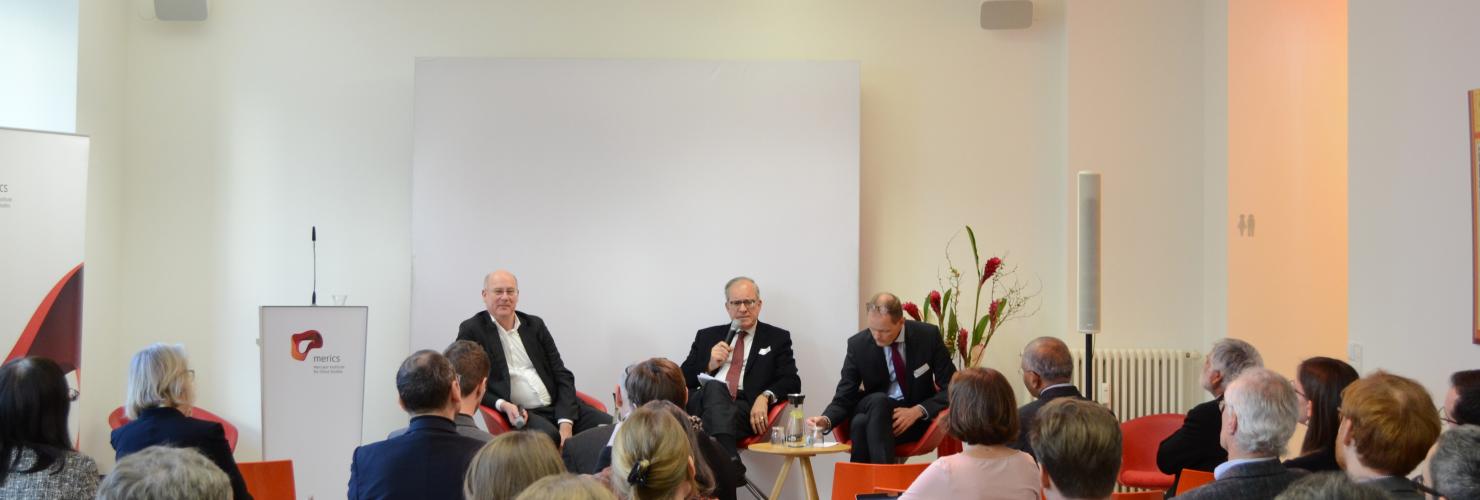
India-China Dynamics: Reappraising the Significance for Europe
On 9-10 January 2020, MERICS hosted a conference in Berlin focusing on the state of bilateral relations between China and India and their significance for Europe. The conference brought together experts from China, India and Europe to discuss bilateral political and economic relations between the two Asian powers as well as a range of issues on which the two differ sharply, encompassing Pakistan and terrorism, connectivity initiatives and maritime security in the Indo-Pacific.
There were also presentations on the domestic drivers of foreign policy in both China and India, including internet nationalism and populism. Among the speakers at the conference, held under Chatham House rules, were past and serving European diplomats who helped to illuminate European perspectives and draw out the geopolitical implications for Europe of the Sino-Indian dynamics.
Assessing the State of India-China Relations after the second informal summit
A retired senior Indian diplomat noted that the President of China, Xi Jinping, and Indian Prime Minister, Narendra Modi, had taken personal charge of the relationship following the election of the latter in May 2014, but the border incident at Doklam in the summer of 2017 marked a ‘low water point’ in bilateral relations.
The relations have since improved following the two so-called ‘informal meetings’ between the two leaders but the fundamental differences between the two countries have not been resolved. These include the territorial dispute, trade deficit, China’s international and military support for Pakistan, and the divergence over their respective visions for the Asia-Pacific region.
A Chinese scholar argued that the informal meeting mechanism had ensured that the relations between the two countries are now driven by the top leaders and that China treats India as a power on an equal footing. However, he blamed India for putting “extreme pressure” on China at a time of profound global changes. Although he was not explicit as to the nature of this pressure, it seems that he was hinting at the growing strategic ties between the United States and India.
Trade deficit and other related issues were explored in detail. A representative from the Confederation of Indian Industry observed that China is now India’s largest source of imports and a leading export destination, while India ranks 26th among China’s sources of imports and its 7th largest export market. India has blamed China’s restrictive trade practices and non-tariff barriers for its almost US$60 billion trade deficit with China in 2018. A speaker from Shanghai, on the other hand, pointed to the difficulties faced by Chinese investors in India for “political reasons,” although he and other speakers also noted a sharp increase in Chinese investment in Indian technology start-ups.
An Indian scholar pointed to China’s growing and comprehensive support for Pakistan as a source of tensions between China and India. This support ranges from tens of billions of dollars in loans and investments as part of the China-Pakistan Economic Corridor (CPEC) to the supply and joint manufacturing of conventional weapons; nuclear weapons and ballistic missile capabilities; and support for Pakistan at the United Nations Security Council and other international institutions on matters that concern India.
Understanding the balance between advancing connectivity and seeking strategic advantage along the Belt and Road
The conference also discussed the Belt and Road Initiative (BRI) and India’s decision not to participate in what it considers to be China’s ambitious economic and geopolitical strategy. A German scholar outlined the reasons behind India’s decision, including its concerns over sovereignty as the CPEC, a flagship project of the BRI, passes through disputed territory. He also highlighted India’s own connectivity initiatives in South Asia and the projects where India is working with third countries, such as the United States and Japan. A senior official from the United Kingdom underscored the need for a diversity of funding models to meet the infrastructure needs of Asia, instead of a “single state-funded approach.” A Chinese scholar, however, foresaw a shift in BRI from big infrastructure projects to social development projects, from government-driven to market-driven projects, and bilateral to multilateral projects under what she called ‘BRI 2.0’.
Wrap-up: Implications for Europe
While India and China are managing their differences, there is no indication that they are any closer to resolving them. Structural disparities and conflicts continue to color perceptions of each other. The lack of mutual trust remains a formidable obstacle to better relations or the ability to jointly tackle global challenges.
India’s growing strategic ties with the United States, its embrace of the Indo-Pacific idea, and its participation in the Quadrilateral Security Dialogue (the Quad) have raised Chinese suspicions. The European scholars and officials at the conference emphasized the importance of the complex dynamics playing out between China and India for the European Union, but there was no consensus on how Europe should respond to the changing security dynamics in the wider Indo-Pacific region. The UK official mentioned above stressed her country’s “all of Asia” approach, not wanting to privilege one region over another.
In assessing the role that Europe could play in the context of Sino-Indian rivalry, a former senior French diplomat underlined the importance of both the Asian powers for some European countries, such as France, as strategic partners. He said that we must consider the Sino-Indian dynamics “on a wider spectrum with a global approach, like the concept of an Indo-Pacific.” However, he argued that the Indo-Pacific must work against any hegemony, should be open and inclusive, and not mean any containment of China. He called upon the European Union to create a narrative on the Indo-Pacific, in which the EU supports a network of democracies in the region, where India has a leading role to play.
A senior German official said the challenge of China and India for Germany is not a policy challenge but a conceptual one. He said both China and India have a sense of time and space which Europe has lost. But he acknowledged that the Indo-Pacific is becoming the center of gravity and, at a practical level, Europe must decide how to engage with that region.
Finally, as to how India should deal with China, the former Indian diplomat summed up India’s approach in four phrases: Engagement, Deterrence, Balancing (but not containment), and Capabilities.
This report was written by Dr Pradeep Taneja, former Visiting Academic Fellow at MERICS and co-convener of the conference.
The Conference was kindly supported by Bertelsmann Stiftung.
